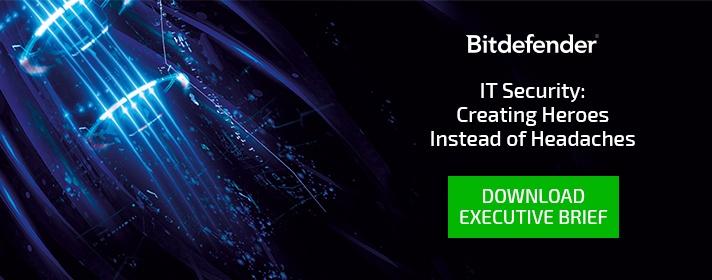The enterprise environment has changed drastically over the past couple of years, with organizations relying on both physical and virtual environments deployed either in private or public clouds to improve service availability or boost business capabilities.
The diversity of tools and software that makes all this possible also comes with some disadvantages, one of them involving security and how to manage all these environments as efficiently and cost effectively as possible. Architectural issues such as how to secure virtual machines that share the same stack of physical resources (e.g. CPU, memory, storage) without affecting their performance have been regarded as difficult – if not impossible – to solve.
One Agent for Any Environment
System administrators and security experts constantly seek the ability to deploy a security solution in any type of environment as quickly and easily as possible. This can only be handled by deploying an agent that can figure out whether the targeted machine is physical or virtual, as well as identify what operating system it’s supposed to work with. Usually, a sysadmin manually deploys a custom security kit for each instance, taking up a lot of time that could be used for other activities.
Also, having a security solution that can be imported to run on any virtualization platform accelerates the deployment process by simply loading the virtual appliance into any hypervisor. This turnkey deployment option is critical when deployment time is a factor that drives migration, security and infrastructure maintenance.
Single Security Console. Minimum Management Effort
Consolidating security control for physical, virtual and even mobile endpoints through a single unified security console provides greater visibility into the full spectrum of company devices and makes it significantly easier to deploy security tools onto all managed devices.
Streamlining security activities and eliminating point solutions is a huge benefit, as it not only saves an incredible amount of time, but can also help during forensic analysis. Reducing security management efforts is always a key factor in improving workflow, allowing sysadmins and CIOs to focus on other infrastructure security aspects to beef up enterprise data security.
Virtualization and Directory Services Integration
When dealing with virtual environments, you’re bound to stumble across virtualization software such as VMware, Citrix and so on, as large infrastructures usually involve some sort of fragmentation in terms of hypervisors. This is usually an issue when picking a security solution, as finding something hypervisor-agnostic that offers the same capabilities for all of them is usually difficult.
Having something that can actively monitor all memory processes without a full-fledged security solution deployed in the VM is all the more difficult when faced with a wide range of hypervisors. Consequently, having something that works with all of these would provide an immense advantage in terms of management.
Centralized Protection. No Bottlenecks.
Sysadmins dread having to deal with security updates that are individually delivered to VMs all at once. While this is obviously a great thing from a security perspective, the heavy resource consumption may result in downtimes, bottlenecks and even increased costs due to dynamic resource allocations – if enabled.
A centralized security server that VMs can use to offload the bulk of antimalware functionality – ranging from file system, memory, process and registry scanning on both Windows and Linux – by using a multilayered caching mechanism, will guarantee optimum performance for all VMs. Load balancing all scanning activities and delivering security updates to VMs without causing performance or network bottlenecks is not only a major benefit -- it should be a requirement!
Bottom Line
A unified platform that can manage all enterprise endpoints – virtual or physical – should be more than just “nice to have,” but an actual “must have.” With cloud-centric databases, sometimes even located in various physical locations around the world, and appliances that play different roles based on the organization’s needs, a centralized security management solution is mandatory.
Licensing costs aside – although they’re usually pretty flexible in terms of either per CPU or per VM purchasing options – organizations stand to gain far more, financially, by adhering to such a solution rather than investing in point solutions that are difficult to maintain, probably have higher costs of ownership, and are not optimized for low resource consumption.
If you are interested in evaluating such a business solution and in testing it according to your own scenarios, you’re more than welcome to check out Bitdefender GravityZone. It not only packs all the right features, but it also relies on security technologies that have set the company apart as a global leader in the security industry.







